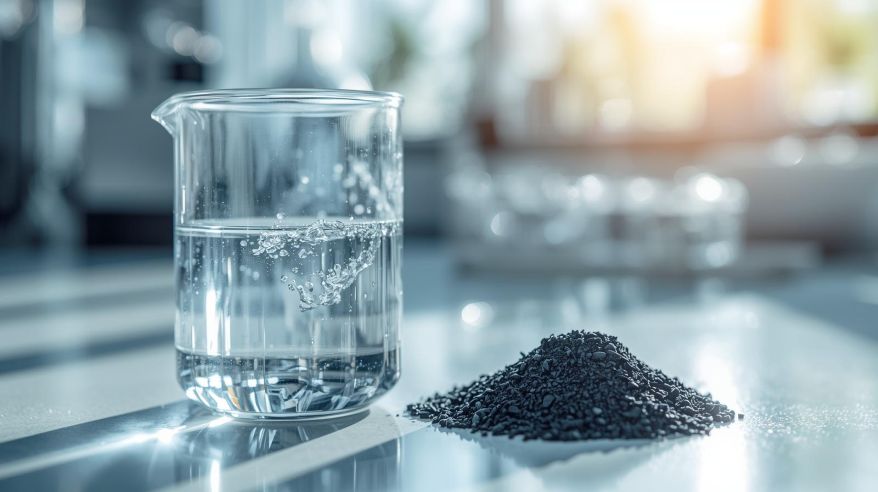Exploring the Complex World of Ice Phases at Room Temperature
Water (H2O), a simple molecule made of hydrogen and oxygen, can form numerous ice phases. Each with unique properties depending on conditions like pressure and temperature. Scientists recently discovered that at room temperature, ice VI—the crystalline structure commonly seen under high pressure—can freeze and melt through at least five different pathways. Recently, researchers discovered a completely new form called ice XXI. This new phase forms when water is rapidly compressed to extremely high pressures at room temperature, conditions that are very different from usual ice formation.
This metastable form of ice means it can exist for some time even though other ice phases are generally more stable under the same conditions. Finding this new phase helps us understand how water behaves under extreme pressures. This knowledge could be important for learning about what happens inside icy moons like Titan or Ganymede, where similar conditions might exist. These pathways are surprising because they occur within the pressure range where ice VI is usually stable, adding new knowledge about how water behaves in extreme environments.
The Role of Metastable Phases
The research found that water pressed quickly to high pressures first forms supercompressed water (SW). This SW then follows different routes. Sometimes directly forming stable ice VI, sometimes going through metastable forms like ms-ice VII or ms-ice XXI before reaching ice VI or melting back into liquid. The presence of these transient phases shows how the microscopic hydrogen-bond network inside water adapts under stress. Further, influences which phase appears. Quick pressurization especially triggers unusual crystalline states that do not show up in slower processes.
The study used advanced equipment, such as a dynamic diamond anvil cell combined with powerful X-ray lasers, to observe these quick transitions happening within microseconds. Such fast-changing events were hard to track before. But they are now essential for understanding water’s behavior in environments like icy moons and deep inside planets. The precise timing of pressure changes revealed two-step crystallization events, highlighting how rapidly microscopic structures can shift under pressure.
The Role of Advanced X-Ray Technology
The discovery was possible because scientists used special tools. Such as the super-intense X-ray beams at facilities like European XFEL and PETRA III. These X-rays work somewhat like a superfast camera. Thus, taking pictures every microsecond to show how water molecules rearrange themselves during compression.
By examining water squeezed between diamond anvils at pressures up to two gigapascals. About 20,000 times higher than air pressure — researchers captured movies showing the crystallization process in real time. This approach explored multiple ways liquid water freezes into different structures depending on the speed and strength of compression.
The Importance of Hydrogen-Bond Networks in Ice Formation
Hydrogen bonds, which connect individual water molecules, play a crucial role in deciding how ice forms and transitions between different phases. Adjustments to these bonds cause the molecular arrangements to change, creating various crystal structures with distinct densities and energies. At low temperatures or fast pressurization rates, these networks become trapped in metastable states. Moreover, this explains why multiple freezing-melting paths exist for what seemed like a single phase previously.
Future Science and Exploration
This newfound complexity impacts more than just physics; it opens new doors for fields like planetary science and astrobiology. Since icy moons around Jupiter or Saturn have extreme pressures but warmer interiors, understanding these hidden transitions helps scientists predict the internal composition and potential habitability of such celestial bodies. It also demonstrates how important experimental speed and precision are to revealing nature’s true diversity.
Reference
- Lee, Y., Kim, J. K., Kim, Y., Kim, M., Cho, Y. C., Husband, R. J., Strohm, C., Ehrenreich-Petersen, E., Glazyrin, K., Laurus, T., Graafsma, H., Bauer, R. P. C., Lehmkühler, F., Appel, K., Konôpková, Z., Tang, M., Dwivedi, A. P., Sztuck-Dambietz, J., Randolph, L., . . . Lee, G. W. (2025). Multiple freezing–melting pathways of high-density ice through ice XXI phase at room temperature. Nature Materials. https://doi.org/10.1038/s41563-025-02364-x
Additionally, to stay updated with the latest developments in STEM research, visit ENTECH Online. Basically, this is our digital magazine for science, technology, engineering, and mathematics. Furthermore, at ENTECH Online, you’ll find a wealth of information.

